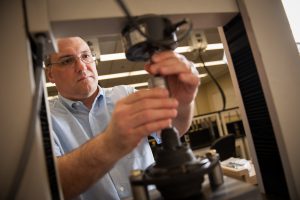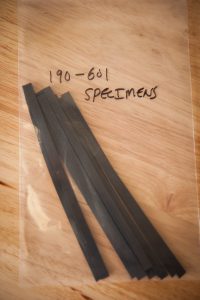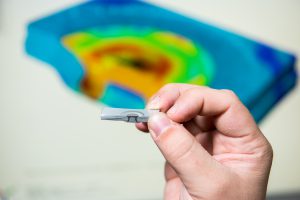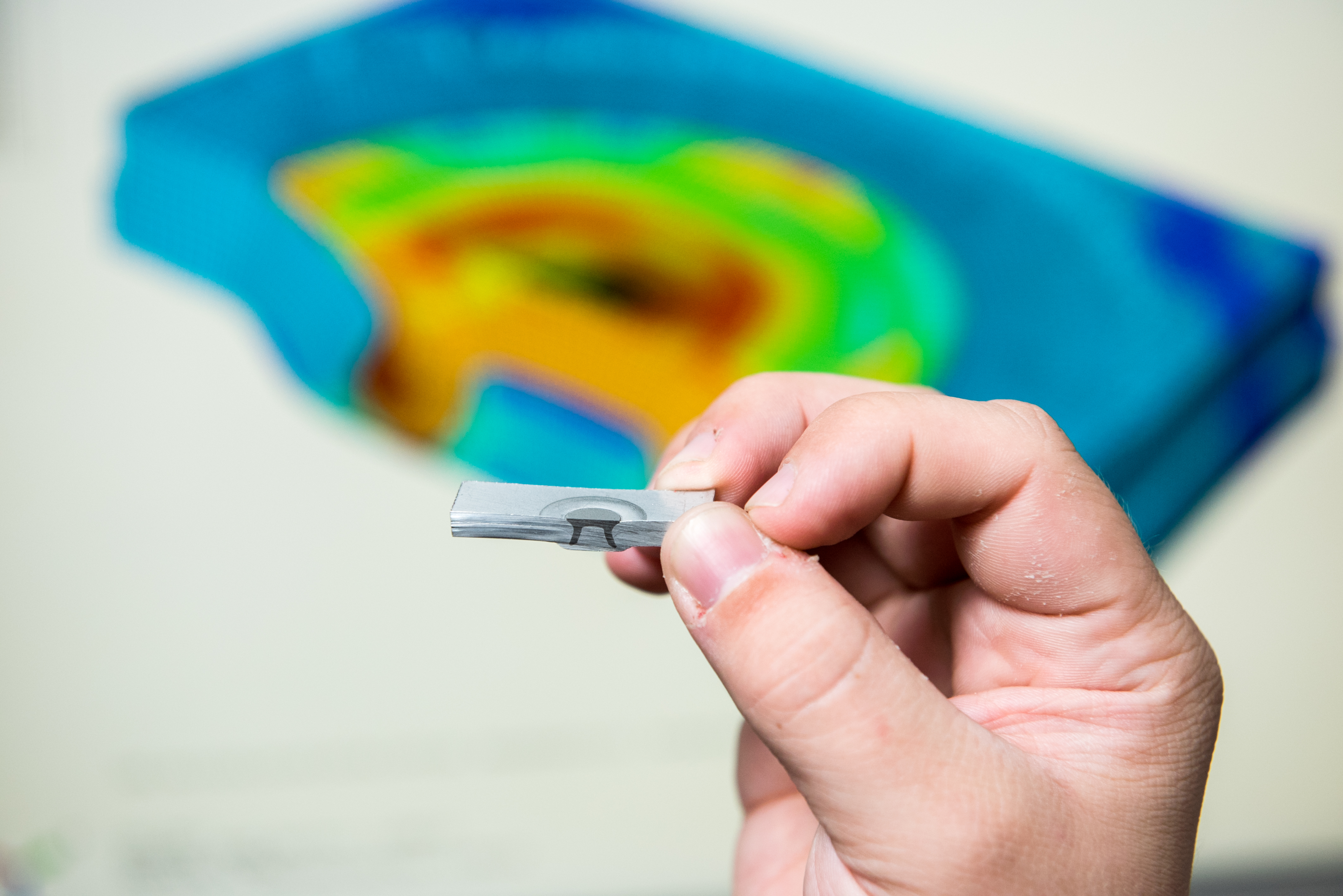By Judah Martin

For years, the auto industry has grappled with the endurance of engine mounts under stress.
In any vehicle, external factors, like heat, have a destructive impact on the specialized rubber that holds the engine mount in place, compromising the length of time it can withstand the weight of the engine and engine loads.
Dr. Mark Barkey, a University of Alabama professor of aerospace engineering and mechanics, has worked on projects with automakers like GM and Ford and, most recently, he was contacted by Chrysler to investigate the stress rubber engine mounts can handle with temperature.
He, along with Dr. Samit Roy, a fellow aerospace engineering and mechanics professor, is working with industry to solve key issues in automotive manufacturing, using computers to save the companies time and money.
“Companies want to do a lot more computer-aided engineering, and they need to have data for that,” Barkey says. “Computer simulations help them to reduce the amount of testing, which can be very expensive. Now they’re just looking for that extra edge … those data that will help them design their cars.”
The rubber in the engine mount is designed for endurance and, without it, drivers would be in for a bumpy ride, as there would be nothing to dampen the vibrations from the engine as it bounces and vibrates underneath the hood.
MIMICKING TEMPERATURES’ IMPACT

Manufacturers can’t control the weather, but Barkey’s research can be used in a computer simulation to mimic temperatures’ impact and help Chrysler engineers predict the maximum load capacity of the rubber. Knowing this, they can better engineer the air flow within the engine compartment to ensure a long life for the rubber engine mounts.
Using a special oven to heat age rubber, Barkey has developed a matrix of times and temperatures to which the rubber is subjected. He places strips of rubber in an oven at a certain temperature, leaving some in for days and leaving others for up to a month. He can then collect data detailing just how the heat impacts the rubber’s elasticity and at what point elasticity is lost. The longer the strip remains in the oven, the more brittle it becomes.
At the designated time, he pulls the rubber strip out of the oven and allows it to cool to room temperature. After testing the strip’s hardness with a durometer, he fastens it in a testing machine that measures its maximum extension and maximum load by stretching it until it breaks.
“We take our data and put the information into a computer model of a rubber strip,” Barkey says. “Chrysler will put that into a computer model for engine mounts.”
SELF-RIVETING BEHAVIOR
Near the time that Barkey began his work with Chrysler, Roy began a project with Mercedes Benz U.S. International to help perfect a new welding method.
In traditional welding, two sheets of metal are joined together in a process where the rivet is hammered through pre-drilled or pre-punched holes.
“The rivets are initially parallel, so if you punch through that causes corrosion,” Roy says. “[The strength of the rivets] depends on the mechanical properties of the sheets, like strength and thickness.”

In the new method, called self-riveting, a semi-tubular rivet is pressed by a high-velocity plunger and pierces through the thickness of the upper sheet. Ultimately, it flares, forming a die in the bottom sheet and creating a mechanical interlock between the two sheets.
This process can save manufacturers both time and money, but, because it’s new, manufacturers do not yet fully understand the mechanical behavior of the rivet joints. So, researchers, like Roy, are collecting data to help manufacturers better estimate the strength of the rivet connections.
In one testing method, called destructive testing, the two sheets are ripped apart, allowing researchers to determine the exact stage where the rivets fail. Such tests can be costly and time-consuming.
PREDICTING DEFECTS
Roy is working with Jeremy Haibach, an undergraduate student assistant, and Dr. Shahab Torkamani, a post-doctoral research associate, to gather data using a computer simulation program as an alternative to destructive testing. The software program, ABAQUS, uses finite element analysis, or FEA, to predict how the rivets will react to external forces like heat or vibration.
Additionally, the software allows Roy to vary the tightness and mechanical properties of the sheets, thus predicting how these different variables affect the strength of the rivets. The program also enables Roy to develop computer simulations altering the size and shape of the die that locks the metals together, reducing the resistance that occurs when the rivet is pressed through the sheets of metal.
The simulations help Roy predict potential defects caused by stresses like friction or pressure at the die interface.
Data provided by both Roy and Barkey can potentially provide automakers with a competitive edge.
